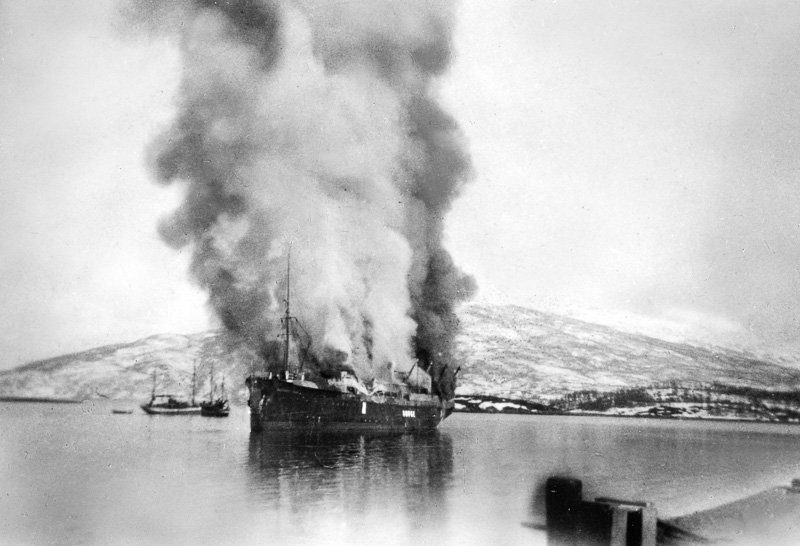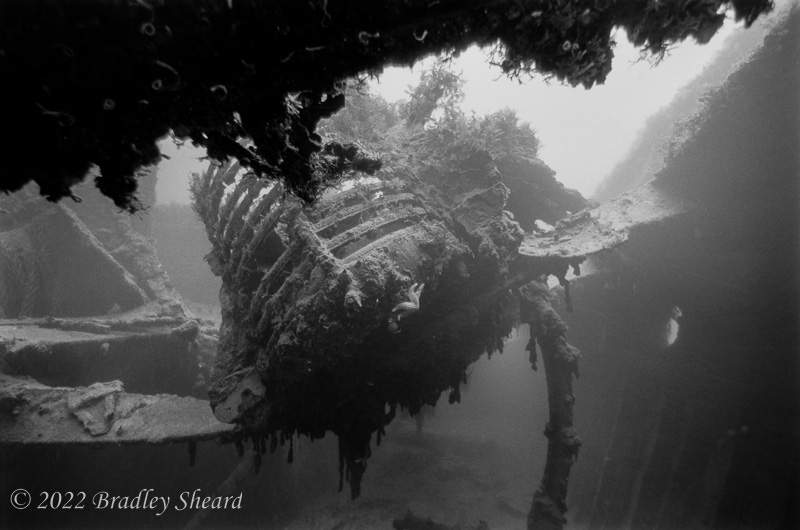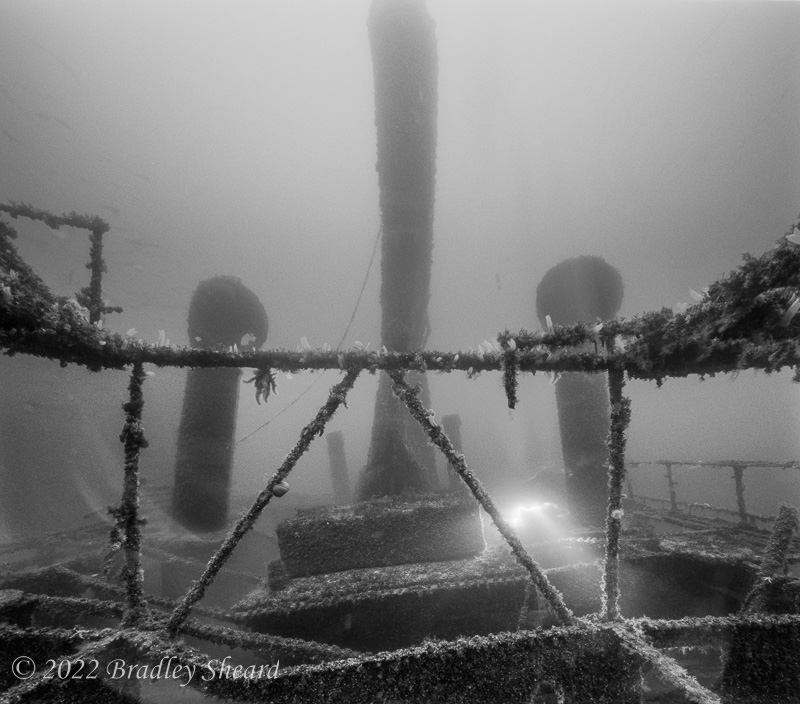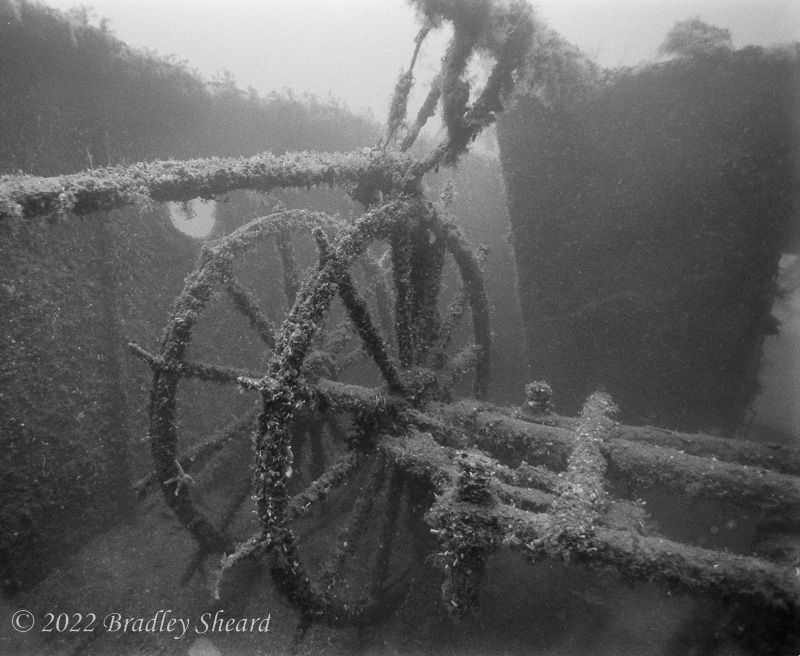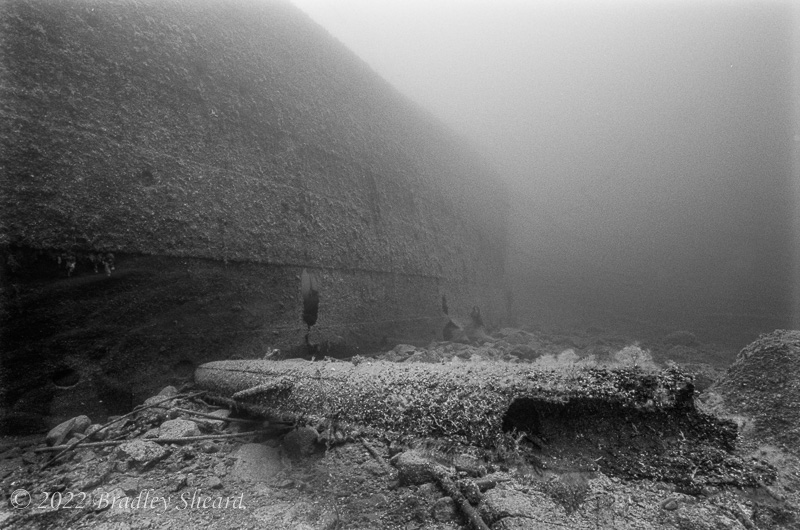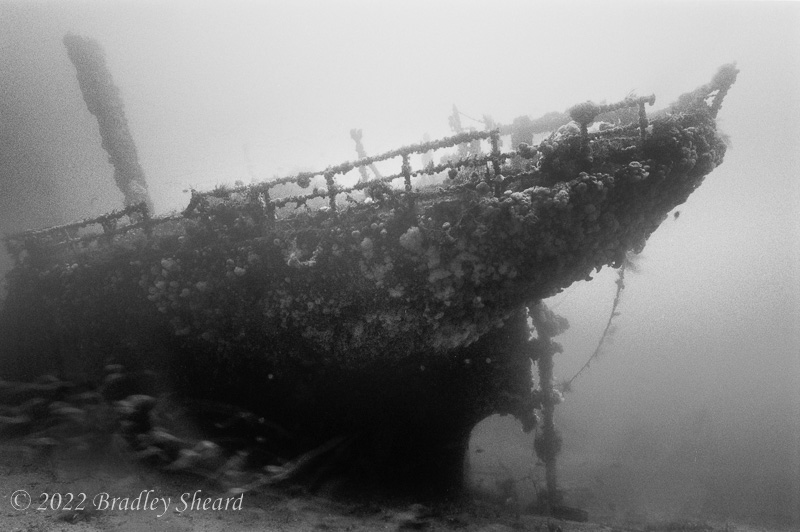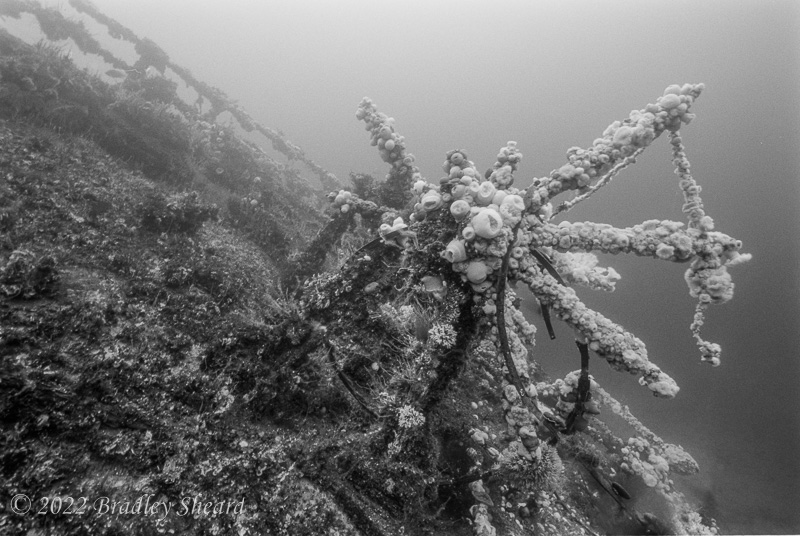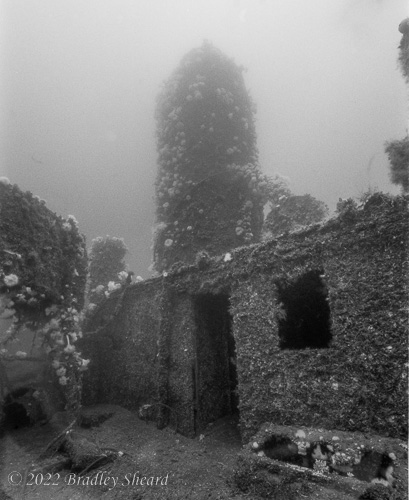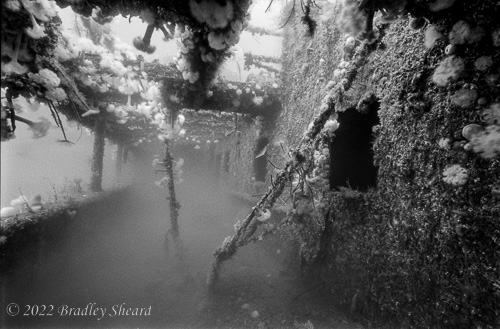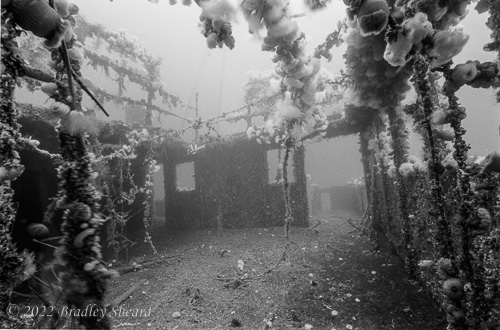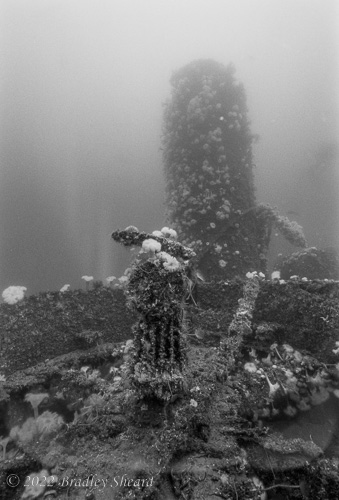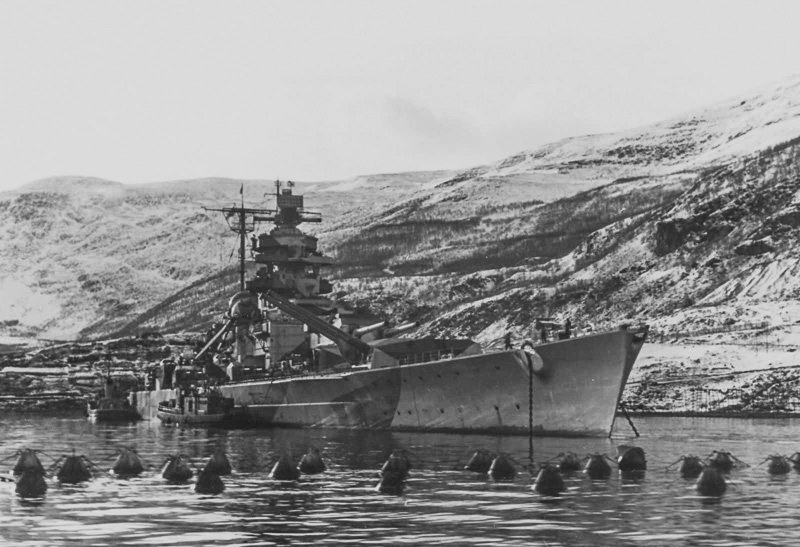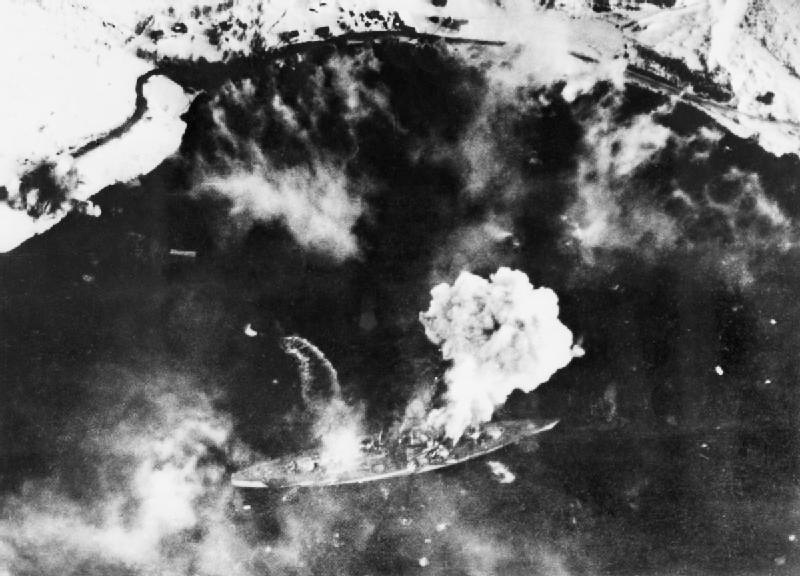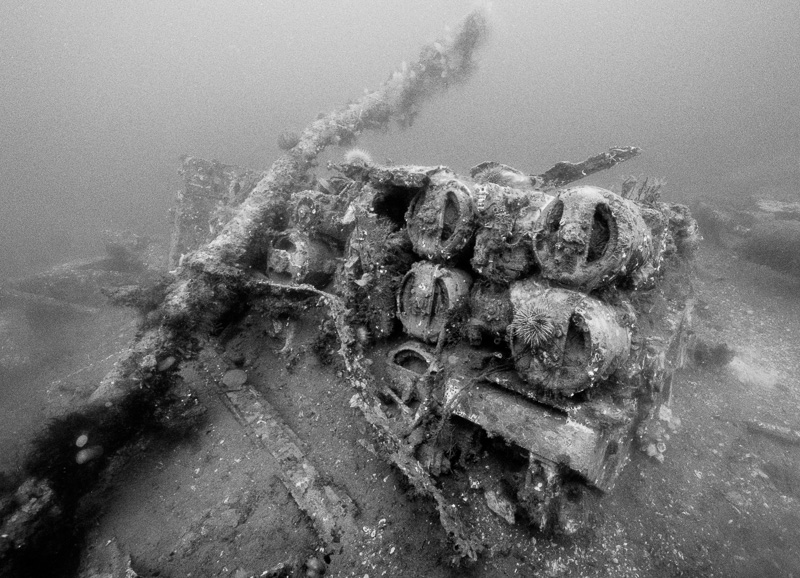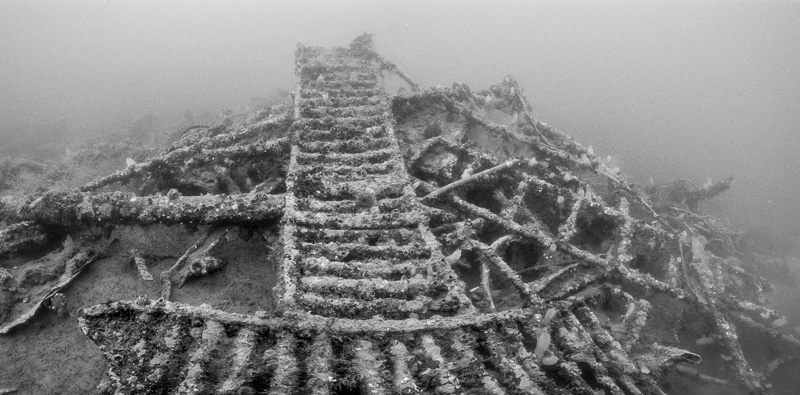German Invasion of Norway (April 1940)
|
At the beginning of the Second World War, Norway was a neutral country and uninvolved in the conflict; her geographic location soon made her a target for invasion, however. For Germany, her location north of the British Isles would provide clear access to the Atlantic for U-boats, but more important was the ice-free port of Narvik--an important port for the export of Swedish iron ore, which was a vital natural resource for Germany's war effort. Great Britain was also keenly aware of Norway's importance, and contemplated an occupation of her own. Germany sent an invasion force north in early April with planned simultaneous landings all along the Norwegian coast, from Oslo to Narvik. Coincidently, the British sent a naval force to lay mines along the Norwegian coast in the hope of sabotaging German trade routes at the same time; neither force was initially aware of the presence of the other. The weather was awful, with extremely rough seas and at times near-zero visibility due to blinding snow squalls. The German force to Narvik consisted of 10 destroyers (Wilhelm Heidkamp, Hans Ludemann, Hermann Kunne, Diether von Roeder, Anton Schmitt, Wolfgang Zenker, Bernd von Arnim, Erich Giese, Erich Koellner and Georg Thiele) and four support ships (Alster, Kattegat, Jan Wellem and the ammunition ship Rauenfels). Entering the harbor at Narvik early on the morning of April 9 with their destroyer force, the German's attempted to get the Norwegian coastal defense ships Eidsvold and Norge to surrender; refusing, both ships were torpedoed with a heavy loss of life. The destroyers were carrying German troops which landed and quickly captured the port of Narvik. Meanwhile, the British had gotten wind of the German landings at Narvik, and sent five destroyers (Hardy, Hunter, Havock, Hostile and Hotspur) into the fjords to attack the Germans, setting up the First Battle of Narvik on April 10. | |
|
First Battle of Narvik (April 10, 1940) The British aimed to achieve surprise in their attack, which they did brilliantly, arriving at the harbor entrance in the early dawn light of April 10. The harbor was obscured by poor visibility, but filled with merchant ships at anchor, and German destroyers refueliing from the tanker Jan Wellem. HMS Hardy was first in line, with Hunter and Havock behind, while HMS Hostile and Hotspur were detached to patrol outside the harbor entrance. Hardy entered Narvik harbor alone, with the other two warships waiting for their turn. Making a 180° pirouette through the harbor entrance, Hardy unleashed a brace of torpedoes at the sleepy sitting ducks, hitting a merchant ship and the Wilhelm Heidkamp's magazine. As Hardy completed her run and headed out of the harbor, Hunter took her turn performing the same maneuver, firing guns and torpedoes into the target-rich anchorage. Havock then followed Hunter; more torpedo hits struck both merchant ships and the destroyer Anton Schmitt. Next it was Hostile and Hotspur's turn, and they unleashed nearly blind torpedo and gun salvos into the now smoking and crowded harbor, followed by more circling and firing from the other three British ships; more merchant ships and German destroyers took damaging hits. The German Diether von Roeder managed to unleash eight torpedoes at the British, but all missed or failed to explode. There was a lull in the action as the British discussed whether to continue or withdraw; continue was the decision, and the five destroyers reformed in line ahead for yet another run 'round the harbor entrance; this time both sides unleashed deadly torpedoes at each other. As the British destroyers finally withdrew, the scene inside Narvik harbor was one of destruction: "There were ships with their bows in the air, their sterns in the air; ships with only lolling masts and funnels in the air; ships with little to show that they had ever been; marble slabs of ships...Over them all hung a sepulchral, acrid mist." (Reference 1, p. 74). The British forces were not destined to get away undamaged, however, and as they made their way westward and away from Narvik harbor three fresh German destroyers, Wolfgang Zenker, Erich Koellner and Erich Giese descended upon them from the east. Gunfire was exchanged with hits on both sides. Suddenly, two more German ships appeared in front of the British and they found themselves surrounded. Georg Thiele and Bernd von Arnim opened fire with Thiele ultimately connecting with Hardy, destroying her bridge. Torpedoes criss-crossed the waters of the fjords, ships maneuvered desperately to comb torpedo tracks and fire guns. Hunter was sunk outright and Hardy largely demolished and driven aground, while Havock and Hotspur were damaged, as was Georg Thiele on the German side. The three remaining British destroyers withdrew to the west, while those Germans left afloat withdrew back to Narvik. One last encounter remained: the British destroyers came across the German ammunition ship Rauenfels and stopped her with a couple high-explosive shells. Boarding her for inspection, the British were unaware that the shells had started a fire in her cargo hold below. Realizing their mistake, they quickly abandoned the vessel, then fired two more rounds into the Rauenfels; "The result must have been one of the most shattering explosions of those good old days before nuclear weapons; Mr Leslie Millns, Torpedo Gunner, saw a bright flash in the center of the ship which expanded until she shone from end to end; it seemed that it was not just the cargo which detonated but the whole ship." (Reference 1, p 94) The conclusion of the battle left both sides with two fewer destroyers than they had begun the action with; the Germans had lost Wilhelm Heidkamp and Anton Schmitt, with many of the remaining eight damaged and short of fuel and ammunition; the British had lost both Hardy and Hunter; in addition, nearly a dozen merchant ships in the harbor were wrecked or sent to the bottom. |  |
| The scene inside Narvik harbor after the battle | |
|
Second Battle of Narvik (April 13, 1940) Having inflicted considerable damage on the Germans, the smaller British force withdrew from the scene, but their job was left unfinished--the Germans still occupied the iron ore port of Narvik, and still had eight warships afloat. Three days later, on April 13, the British returned in force. In a risky maneuver they sent the battleship Warspite, along with nine destroyers, into the confined waters of the fjords, where the eight German destroyers were licking their wounds; also present were no less than five U-boats. Warspite was armed with 15-inch guns capable of devastating the German destroyers; she was also equipped with a catapult-launched Fairey Swordfish aircraft, carrying bombs and providing vital observation capabilities. Before the looming battle had even begun, the Warspite's aircraft bombed and sank one of the German submarines, U-64. The ensuing naval battle was a mis-matched, chaotic affair, with many of the German ships short of fuel and ammunition and damaged from the first battle. The immense firepower of the British battleship outmatched anything the German destroyers could throw back--with the exception of the always dangerous torpedoes. Yet the battleship's 15-inch armor-piercing shells mostly failed to explode as they passed through the thin-skinned destroyers, robbing them of their lethality. Three of the German destroyers, Erich Koellner, Erich Giese and Diether von Roeder were sunk outright. The remaining five, out of ammunition and defenseless, were scuttled by their crews. Hermann Kunne missed a critical signal, and found herself alone in Herjangsfjord nearly out of ammunition, and drove herself aground with the intention of scuttling. Timed depth charges were set and the seacocks opened before the crew abandoned her; before the charges could explode, however, HMS Eskimo fired a torpedo at the stranded destroyer, and it is unclear whether the ensuing explosion was due to the torpedo or the scuttling charges, but the effect was the same--Hermann Kunne was finished. The four German warships left afloat, Hans Ludemann, Wolfgang Zenker, Bernd von Arnim and Georg Thiele fled into nearby Rombaksfjord, knowing the end was inevitable. "Rombaken; 800 yards wide of deep, dark water, steep-sided to 1,000 feet of rock and scrub on which the snow could only lodge in patches; a place for trolls rather than humans, for it led to nowhere on earth and deterred intruders by its grimness; a place set aside by the god of war for arms to clash unsoftened by any kindly influence; a place where the only amenity was a narrow beach at the ultimate extremity, a mortuary slab where sh[ps went to die." (Reference 1, p. 142) Georg Thiele hung back at the entrance to the long, narrow fjord, fighting to the last in a sacrifice that allowed the other three to beach themselves at the head of the fjord and effect their own destruction. The eight German warships that had invaded the far northern port were gone. The British destroyers did not escape unscathed, however, and suffered significant damage in the fight, including Eskimo's bow being blown off by a torpedo. | |
Diving the Narvik Battlefield
|
The two battles left behind numerous hulks on the bottom of the Norwegian fjords. The harbor was eventually cleared of much wreckage, but much remains. Three of the German destroyers,Wilhelm Heidkamp, Anton Schmitt and Dieter von Roeder were dragged out of the harbor and left on the bottom in shallow water. At least four of the merchant ships remain: Martha Hendrik Fisser, Neuenfels, Romanby and Strassa. The destroyer Hermann Kunne is in nearby Herjangsfjorden and is a fantastic dive; the Georg Thiele is off-limits to divers but her entire bow is out of the water where she was scuttled in Rombakken, and the Rauenfels lies both on the bottom and scattered all over the hillside in Ofotfjord. | |
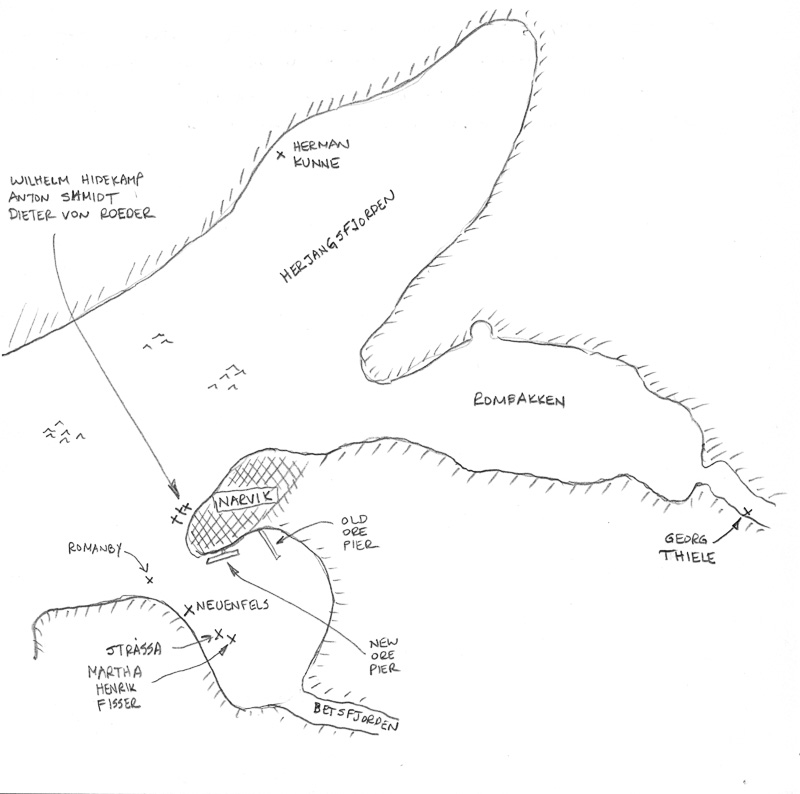 |  |
| Handrawn map of the Narvik area and some of the remaining wrecks (August 2002) | The Georg Thiele's bow aground in Rombaksfjord (August 2002) |
Wilhelm Heidkamp, Anton Schmitt and Dieter von Roeder
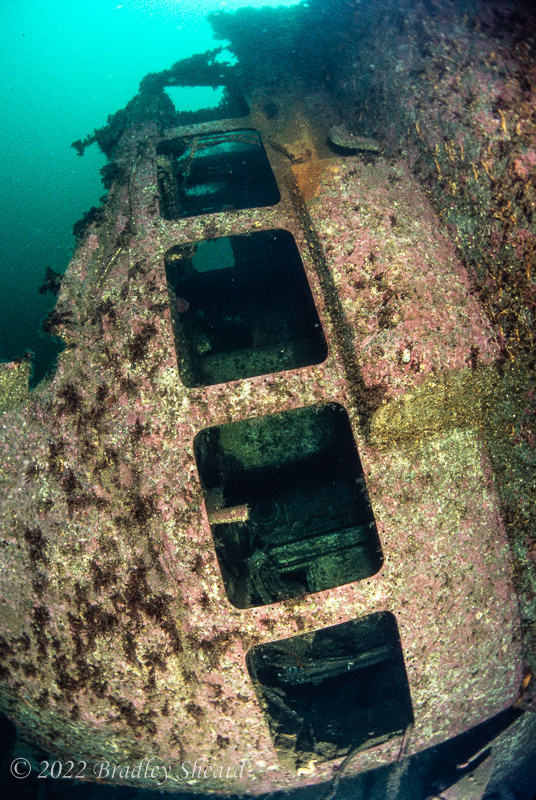 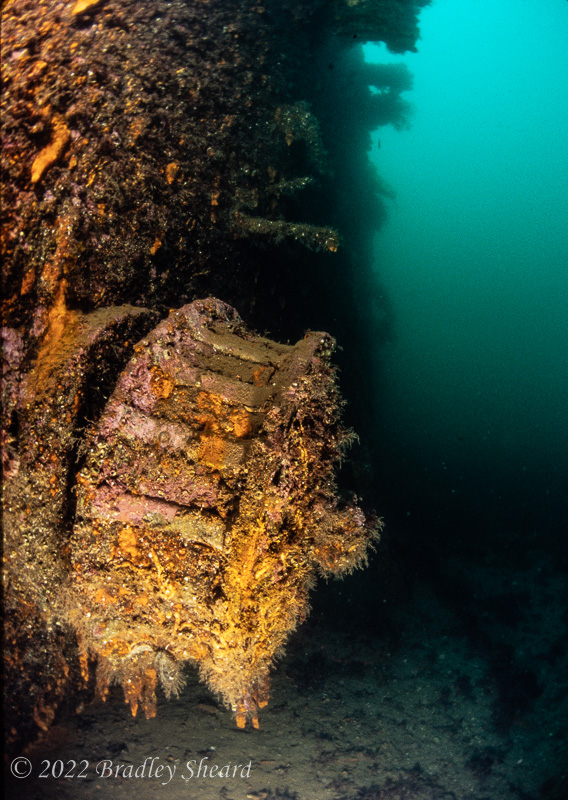 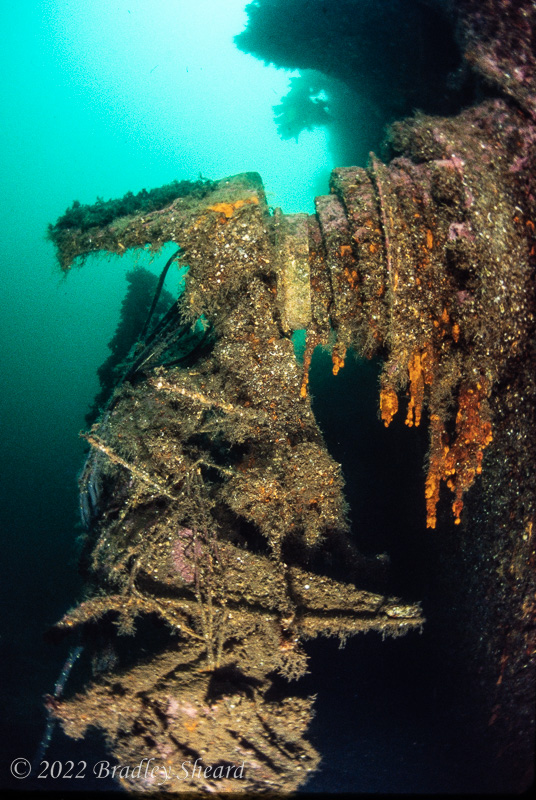 |
 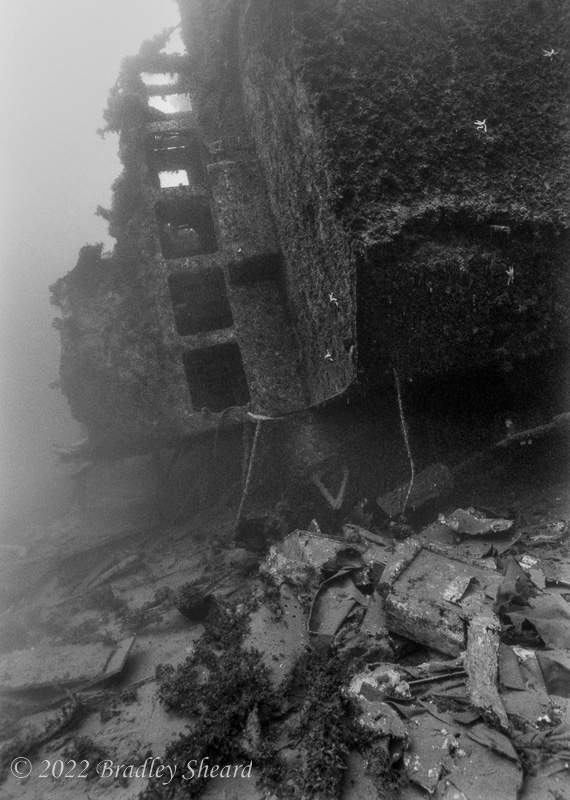 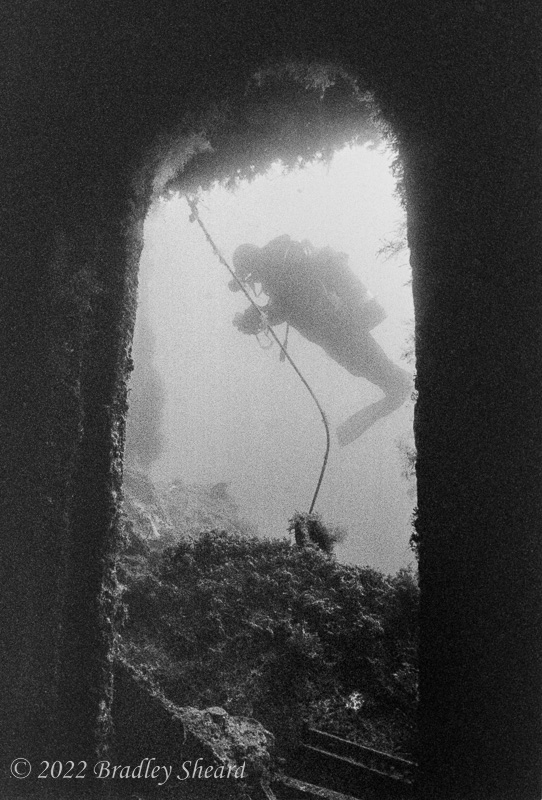 |
| Scenes from the three German destroyers, all lying parallel to one another outside the entrance to Narvik harbor, where they were dragged after the war; Wilhelm Heidkamp sits upright, Anton Schmitt lies on her starboard side and Dieter von Roeder lists to port (August 2002) |
Hermann Kunne
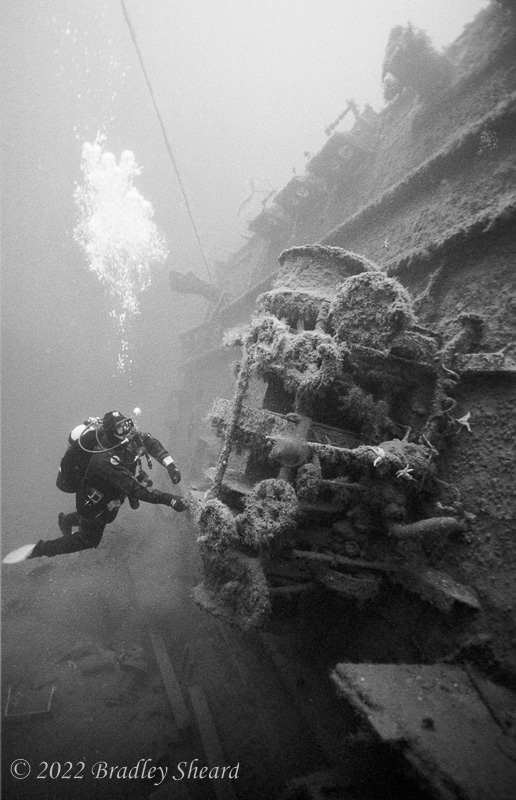 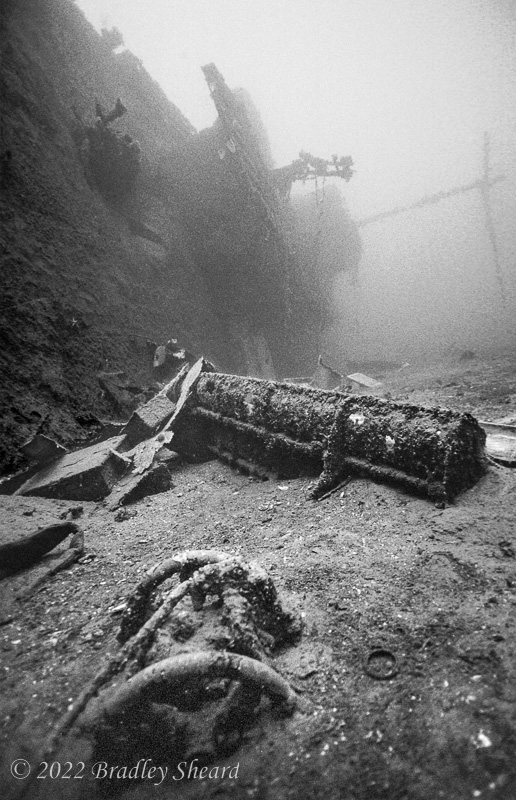  |
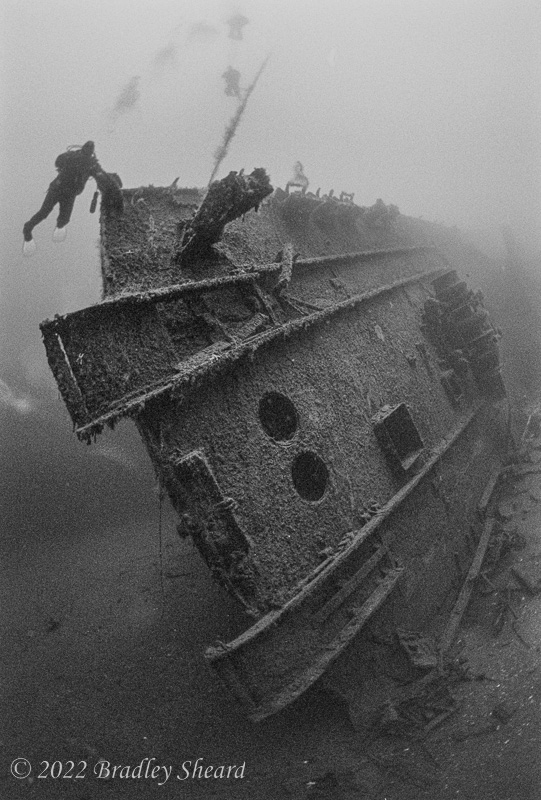  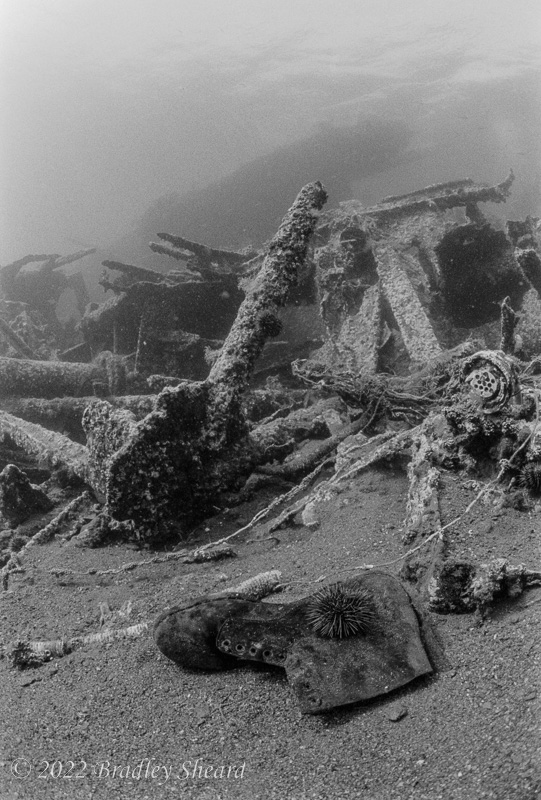 |
| Scenes from the wreck of Hermann Kunne lying on her starboard side in Herjangsfjord (August 2002) |
Merchant ships Romanby, Nuenfels and Strassa
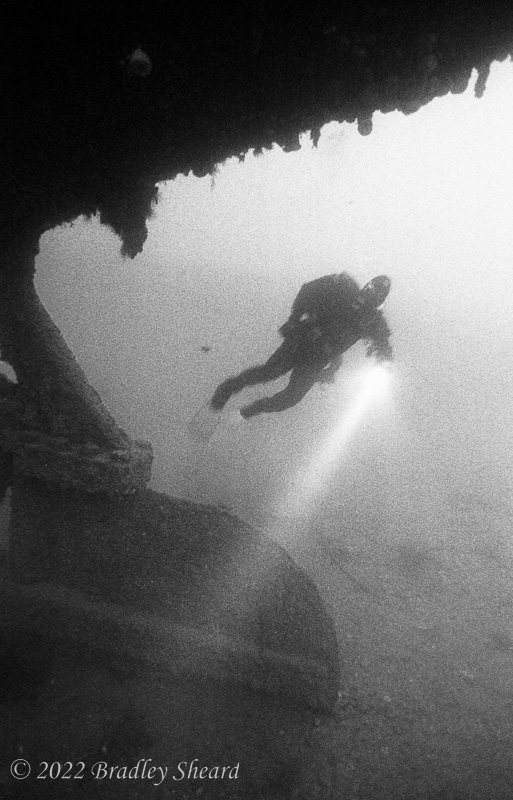 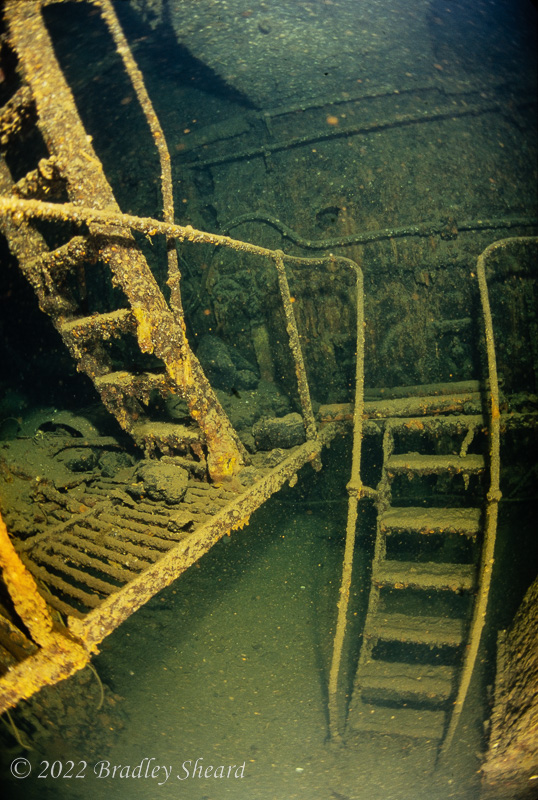  |
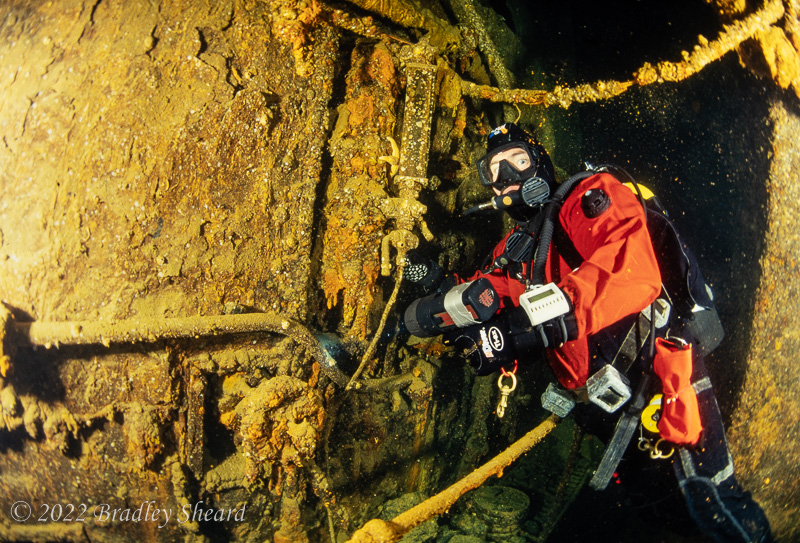 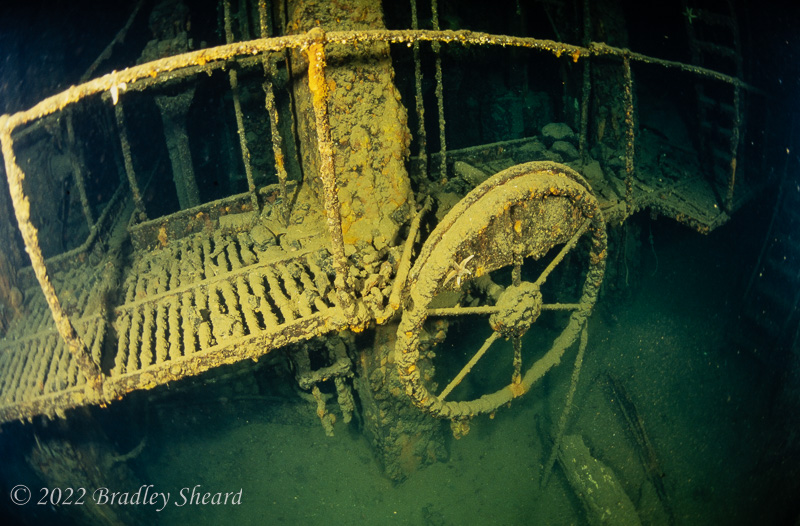 |
| Scenes from the wreck of Romanby sitting on the bottom of the harbor entrance (August 2002) |
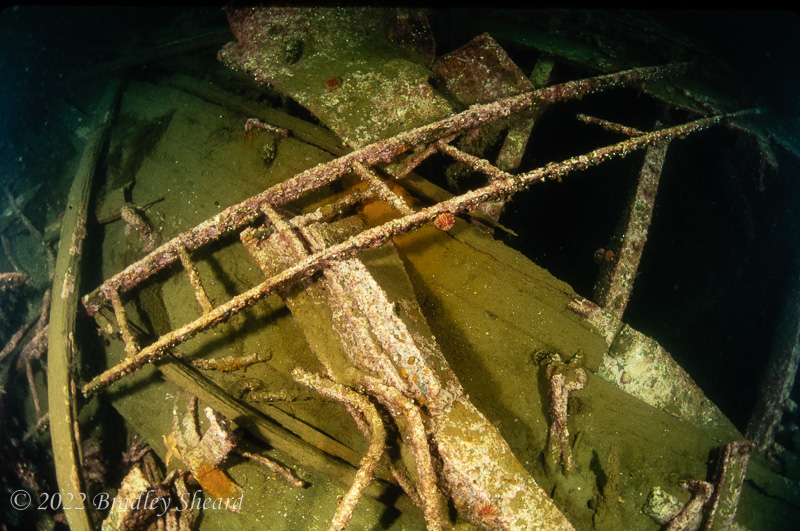 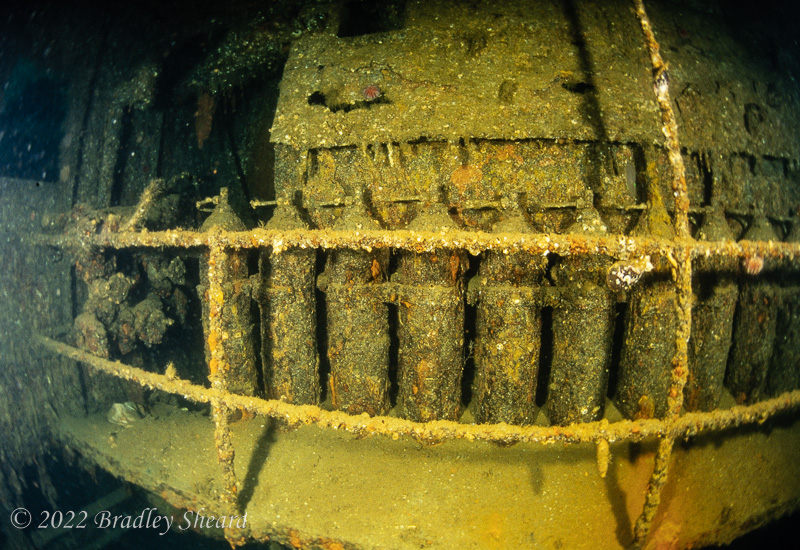 |
| Nuenfels (left) and Strassa (right, both August 2002) |
Ammunition supply ship Rauenfels
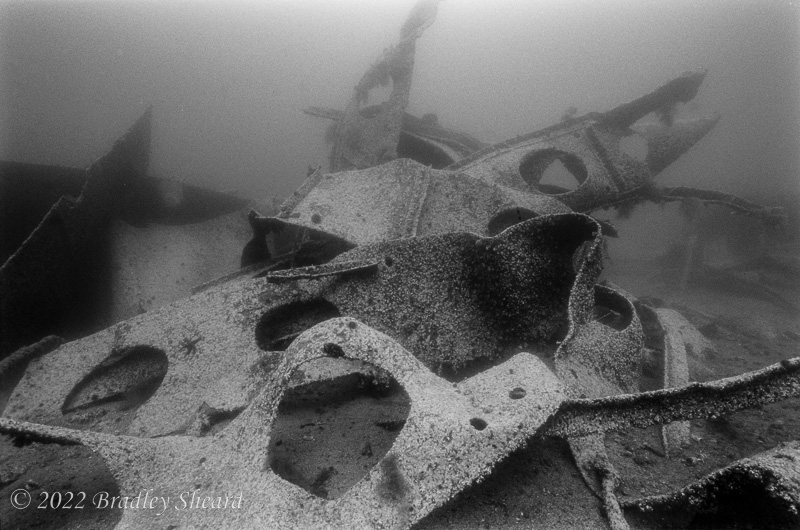 | 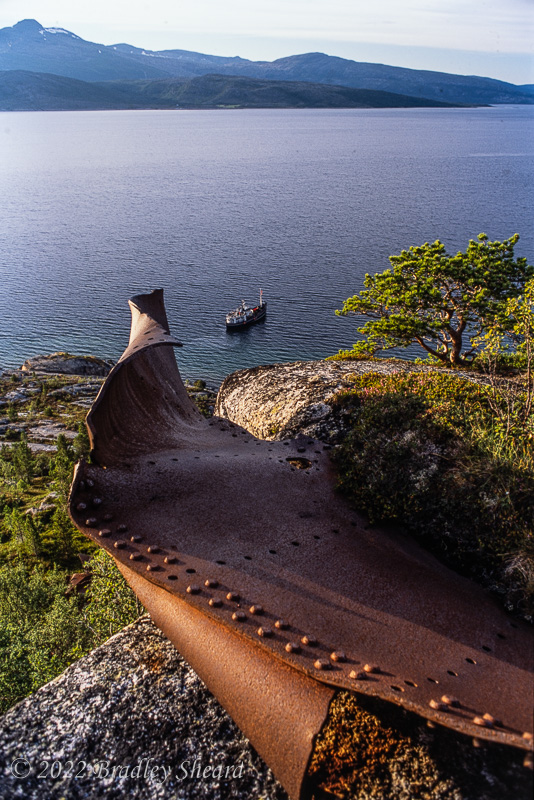 |
 | |
| The wreck of the ammunition supply ship Rauenfels is both a dive (upper left) and a hike. The explosion was so intense that debris was reported to have gone 3,000 feet in the air, a fact that is born out by wreckage still strewn all over the hillside (bottom left and right). In the photo at right, the dive boat can be seen at the bottom of the hillside, anchored over the underwater portion of the wreck (all August 2005) | |
All underwater images were shot on film in 2002 and 2005 with a Nikon N90 in an Aquatica housing with Nikon 18mm and 16mm lenses, as well as a Nikonos camera with a 15mm lens. Films used were Kodak TMX100 (on tripod), TMY400 and TMZ3200, as well as Kodak Ektachrome 100S and Kodachrome 200.

